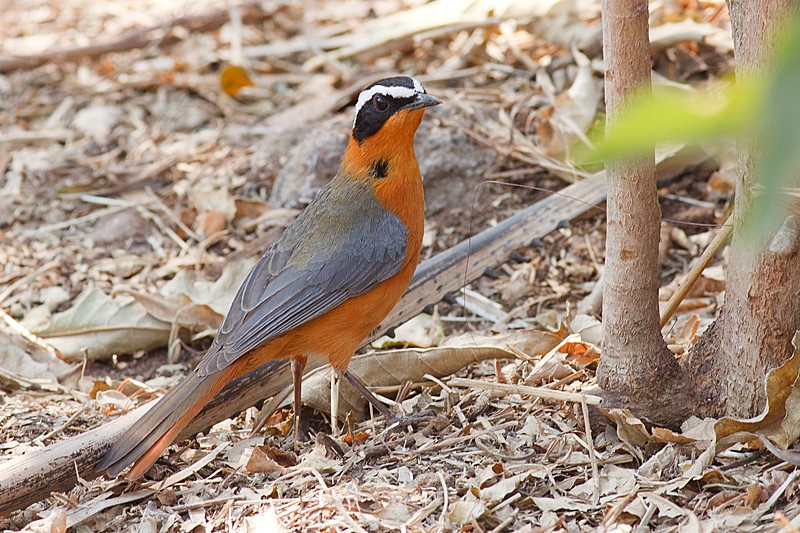White-browed Robin-chat
A species of Robin-chats, Also known as Heuglin's Robin Scientific name : Cossypha heuglini Genus : Robin-chats
White-browed Robin-chat, A species of Robin-chats
Also known as:
Heuglin's Robin
Botanical name: Cossypha heuglini
Genus: Robin-chats
Content
Description General Info
 Photo By Prabir K Bhattacharyya , used under CC-BY-SA-3.0 /Cropped and compressed from original
Photo By Prabir K Bhattacharyya , used under CC-BY-SA-3.0 /Cropped and compressed from original Description
The white-browed robin-chat is 19–20 cm (7.5–7.9 in) long and weighs 29–51 g (1.0–1.8 oz). The crown and face are black, and there is a white supercilium over the dark brown eye. The back is olive grey-brown, and the rump is rufous. The two central tail feathers are olive-brown, and the other feathers are orange-rufous. The flight feathers and wing coverts are grey-brown, and the underwing coverts are rufous. The underparts are bright orange-rufous. The beak is black, and the legs are pinkish brown, brownish grey or dark brown. The female is a little smaller than the male. The juvenile bird has a brown head and rufous-brown marks on its back. Its throat is pale, its breast is pale orange-buff, and its belly is pale orange. 
Size
20 cm
Nest Placement
Tree
Feeding Habits
White-browed Robin-chat primarily feeds on insects, especially ants and beetles, with a partiality to fruit. Forages on the ground using rapid hops and flips leaf litter to uncover food, occasionally catching termites mid-flight.
Habitat
The white-browed Robin-chat inhabits riverine forests, thickets, and occasionally cultivated gardens, thriving in woodland habitats with dense undergrowth and termitaria thickets, often near discontinuous canopies. Found across varied elevations, below 1,000 m south of the Limpopo and up to 2,200 m in East Africa, they also adapt to human-altered landscapes like suburban parks, foraging in open spaces at twilight.
Dite type
Insectivorous
General Info
Feeding Habits
Bird food type
Behavior
The diet consists of ants, termites, beetles, some other insects and arthropods, frogs and fruits. It bathes in water. 
Distribution Area
The range includes Angola, Botswana, Burundi, Cameroon, Central African Republic, Chad, Republic of the Congo, Democratic Republic of the Congo, Ethiopia, Gabon, Kenya, Malawi, Mozambique, Namibia, Rwanda, Somalia, South Africa, South Sudan, Sudan, Swaziland, Tanzania, Uganda, Zambia, and Zimbabwe. Its habitats include riverine forest, thickets and also gardens. In East Africa it can be found up to 2,200 m (7,200 ft) above sea level, but in the part of its range south of the Limpopo River, it generally occurs at elevations below 1,000 m (3,300 ft). In South Africa, its range in KwaZulu-Natal expanded south from the 1950s to the 1970s, but damage caused by a tropical cyclone in 1987 may have stopped the expansion. 
Species Status
Not globally threatened.
Scientific Classification
Phylum
Chordates Class
Birds Order
Perching birds Family
Old world flycatchers Genus
Robin-chats Species
White-browed Robin-chat